How to care for Citrus?
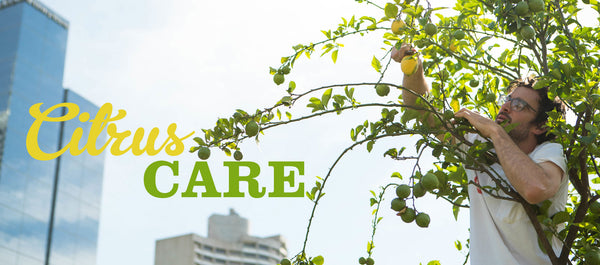
Without fail, all citrus lose their vibrancy throughout the cool season, particularly if you live somewhere cold. Without fail, citrus owners will rush into a garden centre concerned about their sick plants and buy up an array of citrus fertilisers to address the problem. So, first thing is first, don’t be concerned by a winter yellowing off.
Because citrus fruit in winter the plants can become exhausted from their production. Add to that the colder temperatures that restrict the flow of water through the plants’ roots and you have plants in mild distress - but it's natural. As soon as spring and the warmer temperatures arrive, the flow of water increases through the plants veins. Most fruit will then be freed from the branches and they begin to regain their vibrancy.
However an inspection of the yellowing off may alert you to a host of other problems your citrus may be suffering. Gall wasp swellings, curled leaves, leaf miner track marks, scale (oval black bumps) and possibly a few dedicated colonies of ants, are all afflictions that your citrus can do without. Knowing how and when to address them is much like piecing together a puzzle.
The doctors advice always comes first and we are no different. If you want to keep your plants relatively free from pest and disease damage you need to grow happy and healthy citrus. It's true that when we ourselves are healthier we are less prone to sickness. The same applies to your citrus; a stronger plant will be more immune to damage and flush out any attempts by scale, gall wasp, citrus leaf miner and possum to make the plant their own. So what makes a citrus happy?
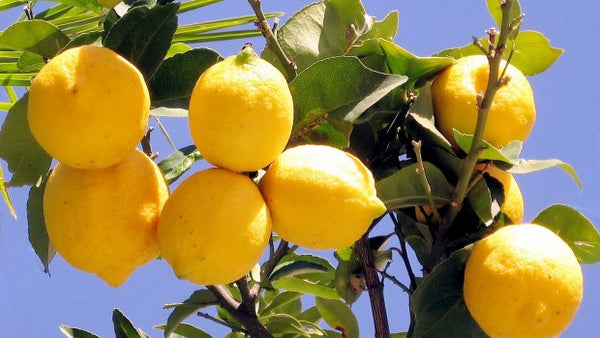
Heat
It just can’t get hot enough for citrus and for this reason you should reserve it the best planting position. Somewhere that faces north west, if you have it, and preferably up against a brick wall that will collect and rebound some residual heat.
Protection from wind
Citrus are shallow rooted and the fact that they are evergreen means the leaf foliage has a habit of catching the wind in the cooler, blowier times of the year, uprooting the shallowest roots and affecting its health. Always look to give your trees some protection from the prevailing winds, and when young, stake them so there’s support. Adding an extra layer of mulch will also protect the roots from drying out.
Free draining soil
“Don’t like wet feet” is an interesting gardening term. It means that they don’t like to sit in water, but it seems to imply that they don’t like water. Incorrect! All plants love water and lots of it. What plants don’t like is sitting in stagnant water, so your soil needs to be free draining. You will need to water your plants regularly, like any other.
Dropping its flowers
A common problem with citrus, particularly new plants, is dropping of flowers and fruit not setting. This is part and parcel of establishing a tree as they are notoriously slow to adapt to their new environment. Sometimes it can also be caused by overfeeding when the plants are producing flowers. Too much nitrogen will focus the plant’s efforts on producing foliage rather than flowers and fruit, and consequently they will drop. Fertilise your plants just after they have fruited, rather than during.
Even once you have ticked all the boxes and are doing everything to benefit your plant, pest and disease can strike - in fact, it's inevitable. Here are some of citrus's major nemesis and organic products we use to deal with them.
Gall Wasp
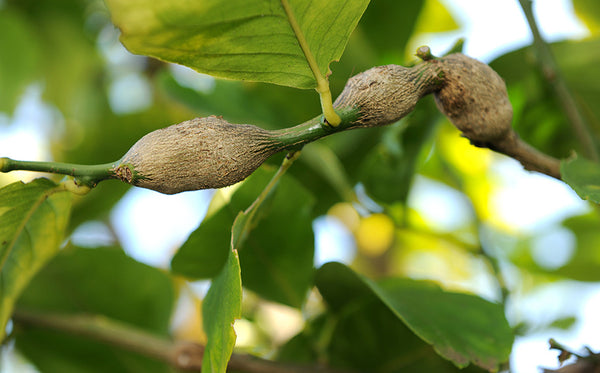
Gall wasp is something that nearly every citrus grower in the country has to deal with. It is a microscopic native wasp that burrows its eggs into the limbs of citrus, primarily lemons and grapefruit - causing swellings or ‘galls’ on the plant - from which the insect hatches. Although it isn’t quickly terminal (and your citrus can live with it for years), if left to its own devices it will begin to severely affect fruit production. The migratory nature of the wasp also means that you can’t ‘cure’ your citrus, rather your plant and the wasp will have to learn to live together.
Managing Gall Wasp Rather than pruning out every new piece you come across, make a concerted effort every few years to eradicate the diseased branches. Along with a seasonal cut back of the outer most swellings, plan a deeper cut back every 3-4 years. After pruning your branches, dispose of any limbs that have unhatched swellings. Little pin-prick holes means the wasp has departed and these can be composted safely, however swellings that are exempt of this tell tale sign should be put in a sealed bag and in the bin.
The wasp find the colour yellow as alluring as a bull does red, but it will also find the yellow thing you hang up in the garden too sticky to pull itself from. This will help control numbers.
Scale
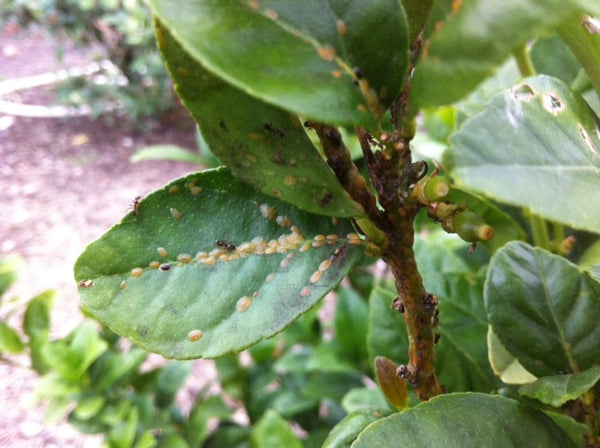
Scale is the name given to a range of sucking pests that feed on the sap of leaves and stems, and hey, they love citrus! Largely immobile, they do not often move over the plant, preferring rather to attach themselves and stay put, giving the appearance of a ‘thing’ - tiny shell like bumps - rather than a pest. Left uncontrolled, they slowly reduce the health and productivity of plants.
Most scale produces a honeydew as they feed and have a waxy protective coating over their body, making them quite resistant to sprays. Ants - that feed on honeydew like a child on chocolate - is often the first alarm to an infestation. While it may seems like the ants are providing a free clean up service, the contract between them and scale is more sinister. Not only do they feed on the honeydew, but protect the scale from would be natural predators.
Managing Scale Scale can be rubbed off with your fingernail or a hard bristled toothbrush, while larger infestations should be trimmed from the plant. Cleaning the plant of the honeydew - with a soapy spray and sponge - will detract the ants’ interest in proceedings.
Using a pyrethrin spray or white (eco) oil will help smother and kill the scale and any looking to set up camp. A homemade version of this can be made mixing 2 tablespoons of vegetable oil and 1 tablespoon of liquid soap with a litre of water and spraying the affected foliage.
Leaf miner
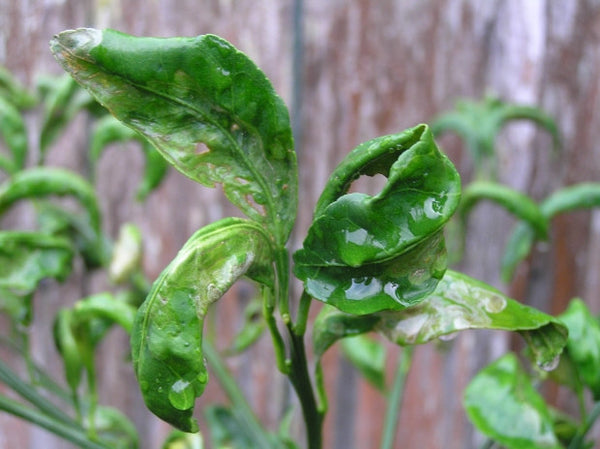
The leaf miner is the larvae of insects, typically of flies but also of moths and sometimes beetles, that are burrowed into the tissue of the leaf. Eggs will appear as small bumps on the underside of the leaves, that when hatch, feed on the tissue leaving recognisable lines or mine tracks. Because the larvae is nestled within the protection of the leaf, it is largely resistant to sprays and predators. The key is in controlling the numbers of the egg laying pests and maintaining healthy plants that are more resistant to attack.
Managing Leaf Miner Sticky pheromone lure traps will attract those flies that are typically responsible for the leaf miners away from the plant and instead to a pile of goo they can’t escape. Mulching the soil will help to break the cycle as this will create a barrier to the soil, which is where the larvae pupate and hatch into mature, egg laying insects. It is best to cut the worse affected leaves and discard in a sealed bag rather than pop in the compost bin.
-
Posted in
fruit trees
